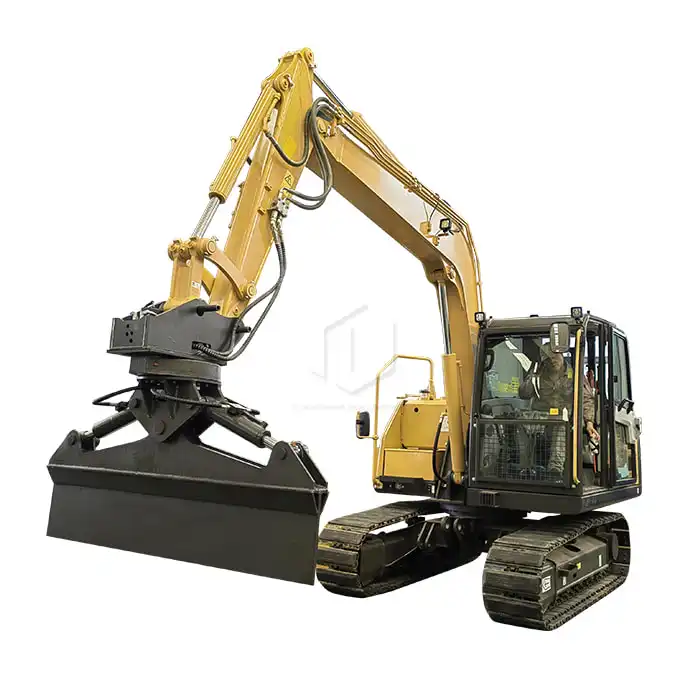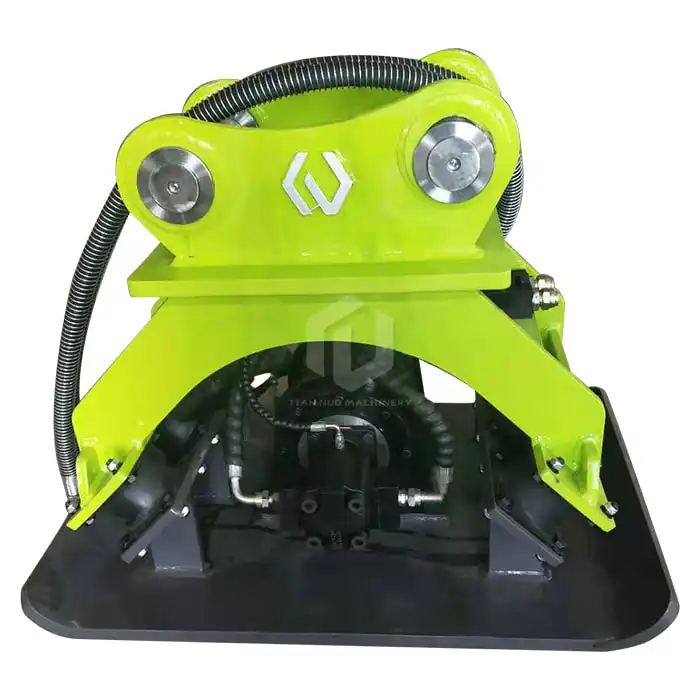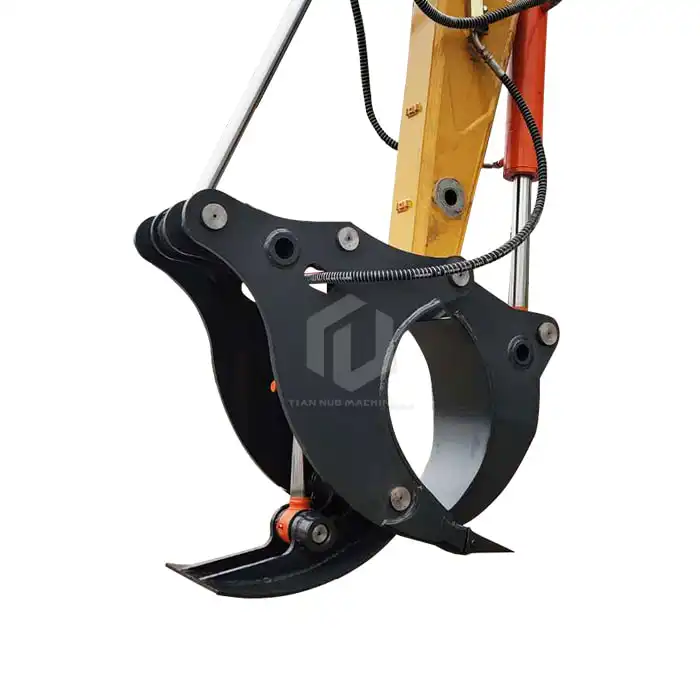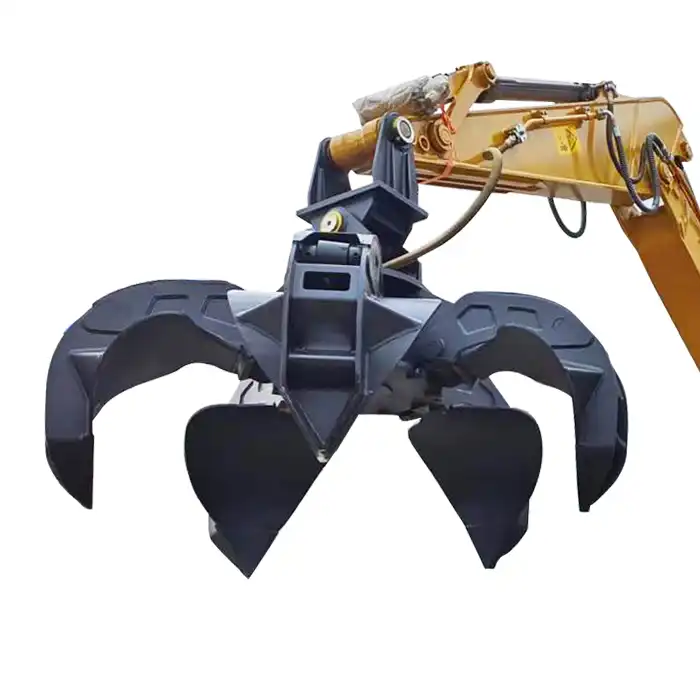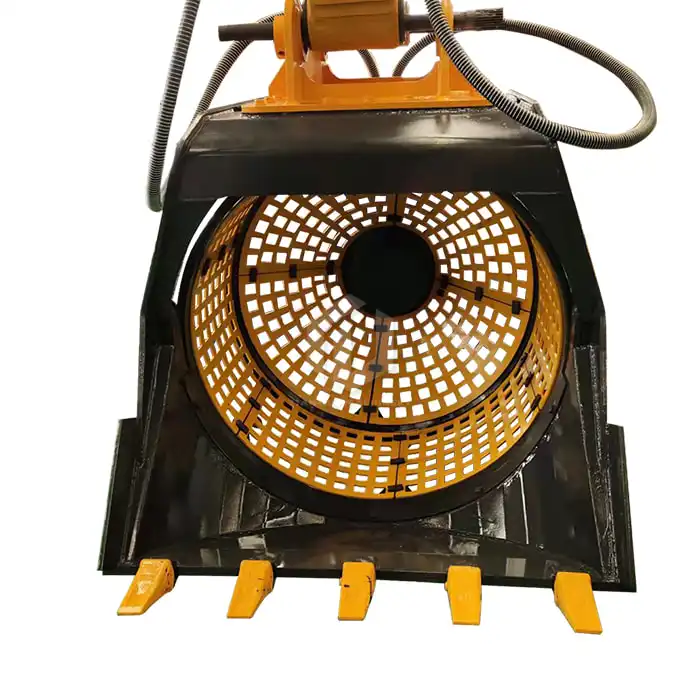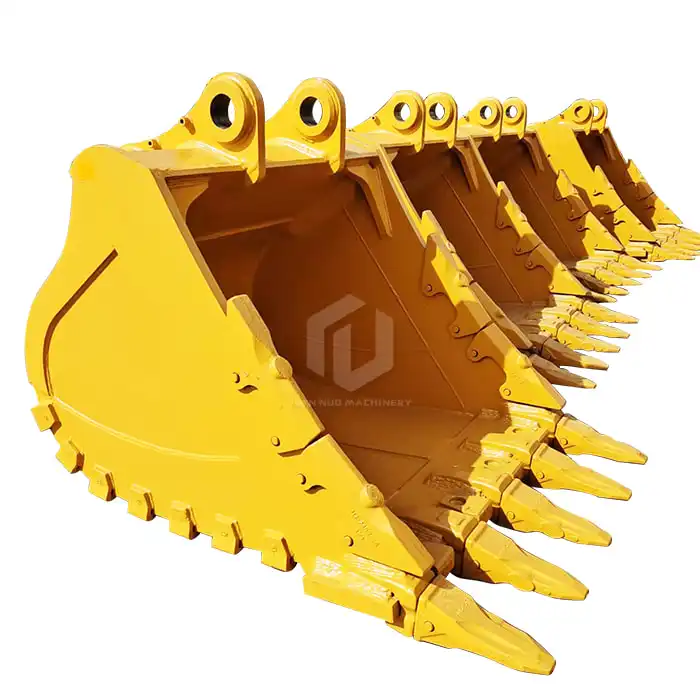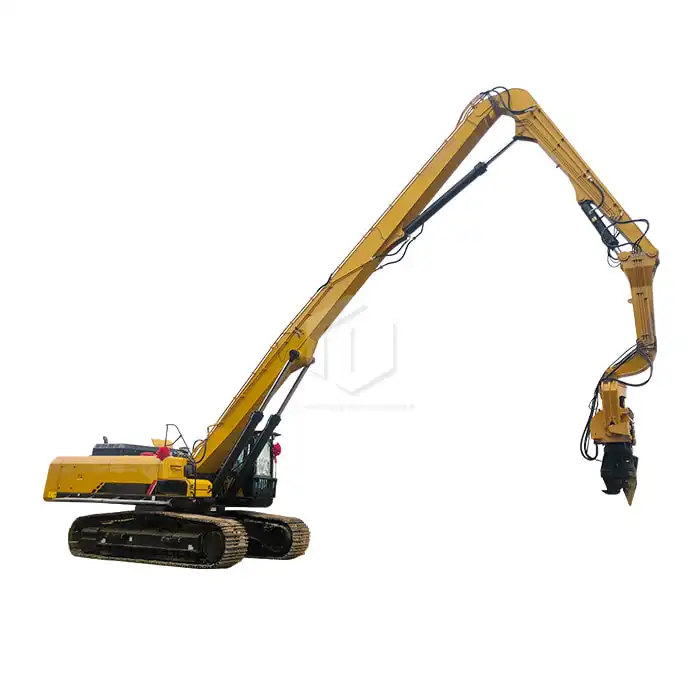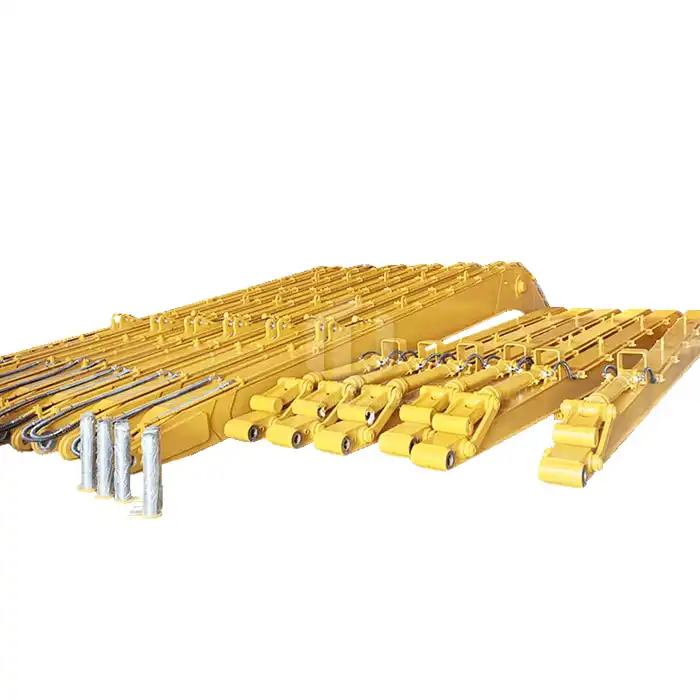Excavator Vibratory Compactor Parts
Excavator vibratory compactors are essential tools in the construction industry, providing efficient soil compaction for various projects. As a crucial attachment for excavators, these compactors play a vital role in ensuring stable foundations and durable surfaces.

What Are the Main Components of an Excavator Vibratory Compactor?
Understanding the primary components of an excavator vibratory compactor is crucial for both operators and maintenance personnel. These parts work together to create the powerful compaction force necessary for various construction applications. Let's explore the key components that make up this essential attachment:
1. Vibrating Plate: The vibrating plate, also known as the baseplate, is the primary contact point between the compactor and the soil. It's typically made of durable materials like steel to withstand the constant vibration and pressure. The plate's design and size can vary depending on the specific application and compactor model.
2. Eccentric Shaft: This component is responsible for generating the vibration that allows the compactor to effectively compact soil. The eccentric shaft rotates at high speeds, creating a centrifugal force that is transferred to the vibrating plate.
3. Hydraulic Motor: The hydraulic motor powers the eccentric shaft, converting hydraulic energy from the excavator into mechanical energy to drive the compaction process. The motor's size and power output are crucial factors in determining the compactor's overall performance.
4. Mounting Bracket: This component connects the vibratory compactor to the excavator's arm or boom. The mounting bracket must be sturdy and well-designed to withstand the forces generated during operation and ensure proper alignment with the excavator.
5. Rubber Mounts: These components act as shock absorbers, isolating the vibration from the compactor and preventing it from transferring to the excavator. Rubber mounts help protect the excavator's components and improve operator comfort.
6. Hydraulic Hoses and Fittings: These components facilitate the flow of hydraulic fluid between the excavator and the compactor, ensuring smooth operation and power transfer.
7. Control Valve: The control valve regulates the flow of hydraulic fluid to the compactor, allowing the operator to adjust the compaction force and frequency as needed for different soil types and project requirements.
Understanding these components and their functions is essential for proper operation, maintenance, and troubleshooting of excavator vibratory compactors. By familiarizing yourself with these parts, you can ensure optimal performance and longevity of your equipment.
How to Maintain and Replace Excavator Vibratory Compactor Parts?
Proper maintenance of excavator vibratory compactor parts is crucial for ensuring optimal performance, longevity, and safety. Regular maintenance can help prevent unexpected breakdowns, reduce downtime, and extend the life of your equipment. Here are some essential maintenance and replacement procedures for excavator vibratory compactor parts:
1. Regular Inspections: Conduct visual inspections before each use to check for any signs of wear, damage, or loose components. Pay special attention to the vibrating plate, hydraulic hoses, and mounting bracket.
2. Lubrication: Proper lubrication is essential for the smooth operation of moving parts. Follow the manufacturer's recommendations for lubricating the eccentric shaft, bearings, and other components that require regular greasing.
3. Hydraulic System Maintenance: Regularly check hydraulic fluid levels and replace the fluid according to the manufacturer's schedule. Inspect hydraulic hoses for signs of wear, cracks, or leaks, and replace them if necessary.
4. Rubber Mount Inspection: Check the condition of rubber mounts periodically, as they can deteriorate over time due to exposure to oil, heat, and vibration. Replace worn or damaged mounts to maintain proper isolation and prevent damage to the excavator.
5. Vibrating Plate Maintenance: Inspect the vibrating plate for any signs of wear, cracks, or damage. Clean the plate regularly to remove dirt and debris that can affect its performance.
6. Bolt Tightening: Regularly check and tighten all bolts and fasteners, as vibration can cause them to loosen over time. Pay particular attention to the mounting bracket and vibrating plate connections.
7. Filter Replacement: If your vibratory compactor has hydraulic filters, replace them according to the manufacturer's recommendations to ensure clean hydraulic fluid and optimal performance.
When it comes to replacing parts, it's essential to use high-quality, OEM-approved components to ensure proper fit and function. Here are some tips for replacing common excavator vibratory compactor parts:
1. Vibrating Plate Replacement: If the vibrating plate becomes severely worn or damaged, it may need to be replaced. Ensure the new plate is compatible with your specific compactor model and follow the manufacturer's installation instructions carefully.
2. Hydraulic Motor Replacement: If the hydraulic motor fails, it's often more cost-effective to replace the entire unit rather than attempting repairs. Consult with a qualified technician to ensure proper installation and compatibility.
3. Rubber Mount Replacement: When replacing rubber mounts, ensure all old material is removed, and the mounting surfaces are clean. Install new mounts of the correct size and type, and tighten them to the specified torque.
4. Hydraulic Hose Replacement: When replacing hydraulic hoses, use hoses of the correct length and pressure rating. Ensure proper routing to avoid kinks or contact with moving parts, and always use new seals and O-rings when reconnecting fittings.
By following these maintenance and replacement procedures, you can significantly extend the life of your excavator vibratory compactor and ensure its optimal performance throughout its service life.
What Materials Are Used in Manufacturing Vibratory Compactor Parts?
The materials used in manufacturing vibratory compactor parts play a crucial role in determining the equipment's durability, performance, and overall lifespan. Manufacturers carefully select materials that can withstand the harsh conditions and intense forces experienced during compaction operations. Let's explore some of the key materials used in various components of excavator vibratory compactors:
1. High-Strength Steel: The vibrating plate and many structural components are typically made from high-strength steel alloys. These materials offer excellent durability, wear resistance, and the ability to withstand repeated impacts and vibrations. Common steel grades used include ASTM A36, ASTM A572, or similar high-strength, low-alloy (HSLA) steels.
2. Ductile Iron: Some components, such as the housing for the eccentric shaft or certain brackets, may be made from ductile iron. This material offers good strength and shock resistance while being relatively easy to cast into complex shapes.
3. Hardened Steel: The eccentric shaft and bearings are often made from hardened steel, such as AISI 4140 or 4340. These materials provide excellent wear resistance and can withstand the high stresses and repeated loading cycles experienced during operation.
4. Bronze or Brass: Bushings and certain bearing components may be made from bronze or brass alloys, which offer good wear resistance and self-lubricating properties.
5. Synthetic Rubber: Rubber mounts and seals are typically made from synthetic rubber compounds, such as nitrile (NBR) or ethylene propylene diene monomer (EPDM). These materials provide excellent vibration isolation and resistance to oil and environmental factors.
6. High-Pressure Hydraulic Hoses: Hydraulic hoses are usually constructed with multiple layers, including an inner tube made of synthetic rubber, reinforcement layers of high-strength wire or fiber, and an outer cover of abrasion-resistant synthetic rubber.
7. Aluminum Alloys: Some non-load-bearing components, such as covers or housings, may be made from aluminum alloys to reduce weight without sacrificing durability.
8. Composite Materials: In some cases, manufacturers may use advanced composite materials for specific components to achieve a balance of strength, weight reduction, and vibration damping properties.
9. Wear-Resistant Coatings: To enhance durability and wear resistance, some components may be treated with surface coatings or heat treatments. These can include hard chrome plating, nitriding, or the application of wear-resistant alloys through welding or thermal spraying.
10. Elastomers: Various seals, gaskets, and flexible couplings may be made from elastomeric materials, such as polyurethane or fluoroelastomers, to provide effective sealing and vibration isolation.
The selection of materials for vibratory compactor parts involves careful consideration of factors such as strength-to-weight ratio, wear resistance, fatigue life, and cost-effectiveness. Manufacturers often conduct extensive research and testing to optimize material choices for each component, ensuring that the final product meets the demanding requirements of the construction industry.
As technology advances, new materials and manufacturing processes continue to emerge, offering opportunities for further improvements in the performance and durability of excavator vibratory compactors. This ongoing innovation helps manufacturers create more efficient, longer-lasting, and environmentally friendly equipment to meet the evolving needs of the construction industry.
China Excavator Vibratory Compactor Manufacturers
Tiannuo Machinery, a leading China excavator vibratory compactor manufacturer, offers a range of high-quality compactors designed to meet the diverse needs of construction projects worldwide.
Tiannuo Machinery's excavator vibratory compactors boast impressive specifications, with a weight range of 2000 to 4000 kg and construction speeds ranging from 2 to 4 m/min. These specifications demonstrate the versatility and efficiency of their products, making them suitable for a wide variety of compaction tasks.
If you're in the market for a reliable and efficient excavator vibratory compactor, we encourage you to reach out to Tiannuo Machinery. Their team of experts is ready to assist you in finding the perfect solution for your construction needs. For more information or to discuss your specific requirements, please contact their manager at arm@stnd-machinery.com. Alternatively, you can reach out to team members Rich at rich@stnd-machinery.com or TN at tn@stnd-machinery.com.
By choosing Tiannuo Machinery as your China excavator vibratory compactor manufacturer, you're investing in quality, reliability, and innovation. Take the first step towards enhancing your construction capabilities by contacting them today.
References:
- Caterpillar Inc. (2021). "Compaction Technology and Operation." Caterpillar Performance Handbook, Edition 51.
- Volvo Construction Equipment. (2019). "Maintenance and Service Manual: Excavator Attachments." Volvo Group.
- ASM International. (2018). "ASM Handbook, Volume 1: Properties and Selection: Irons, Steels, and High-Performance Alloys." ASM International.

